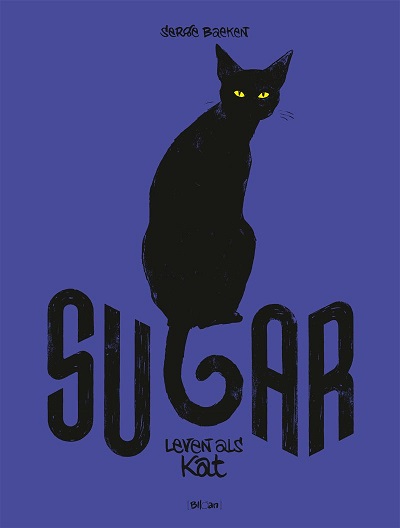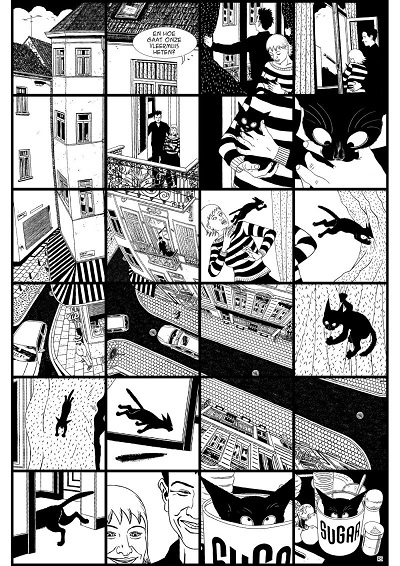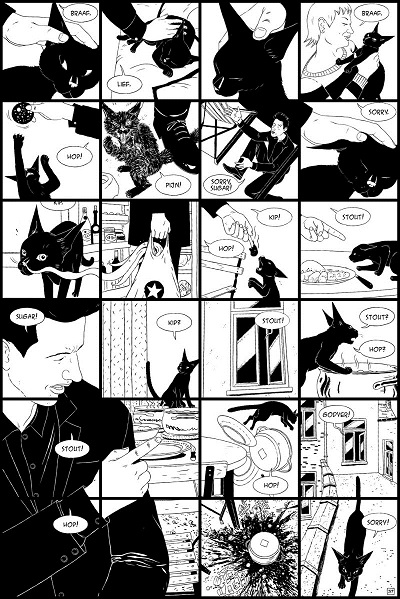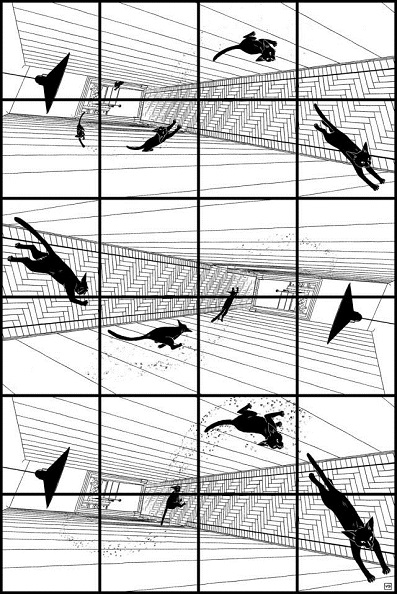One of the best comics published last year was Serge Baeken’s Sugar, a slice of life comic about the life of a cat and the family he’s adopted into. Cat comics are always problematic because they so easily dive into sentimentality; it’s so easy just to lose yourself in cute anecdotes. Baeken’s work on the other hand has a bite to it. Partially because he recognises the essential truth of having cats, that you have to get used to their death, you share your life with them for, if you’re lucky, ten-fifteen years and then have to get used to their absence.
But more than that, it’s the art that keeps it from being sentimental, in its formalism. Baeken keeps the same six by four panel grid throughout the book, but within these panels experiments with layout in a way you don’t see a lot in other comics, certainly not so consistently. So in the early page shown above, you basically have a big overview picture of the street and block of flats the family lives in, intercut in panels, with the narrative set on top of it. It’s hard to know how to read it at first, your eye drawn down the page following the line of the building first, then back up to the first text balloon. Or perhaps down the road in the middle of the picture?
Baeken uses a lot of, if I understand McCloud’s Understanding Comics correctly, “aspect to aspect” transitions between panels, where different aspects of one idea are shown, rather than the passage of time. Here used like a training montage in a movie to show Sugar learning how to “talk” with his humans. I like the way in which the people are drawn slightly more “realistic”, with more lines to their faces than the cats, sleek and stylised.
The consistent six by four grid is also great at showing action, with Sugar breaking through the panel borders, background orientation shifting with his own. There’s a touch of Toth, of Hugo Pratt in Baeken’s use of black and white, of shadow. These are pictures you can keep looking at for hours.

As Wim Lockefeer laments at the Forbidden Planet blog, Sugar hasn’t been translated into English yet, but it wouldn’t need much translation. If you’re even slightly comfortable with French or Dutch, pick this up at your favourite comic store.


